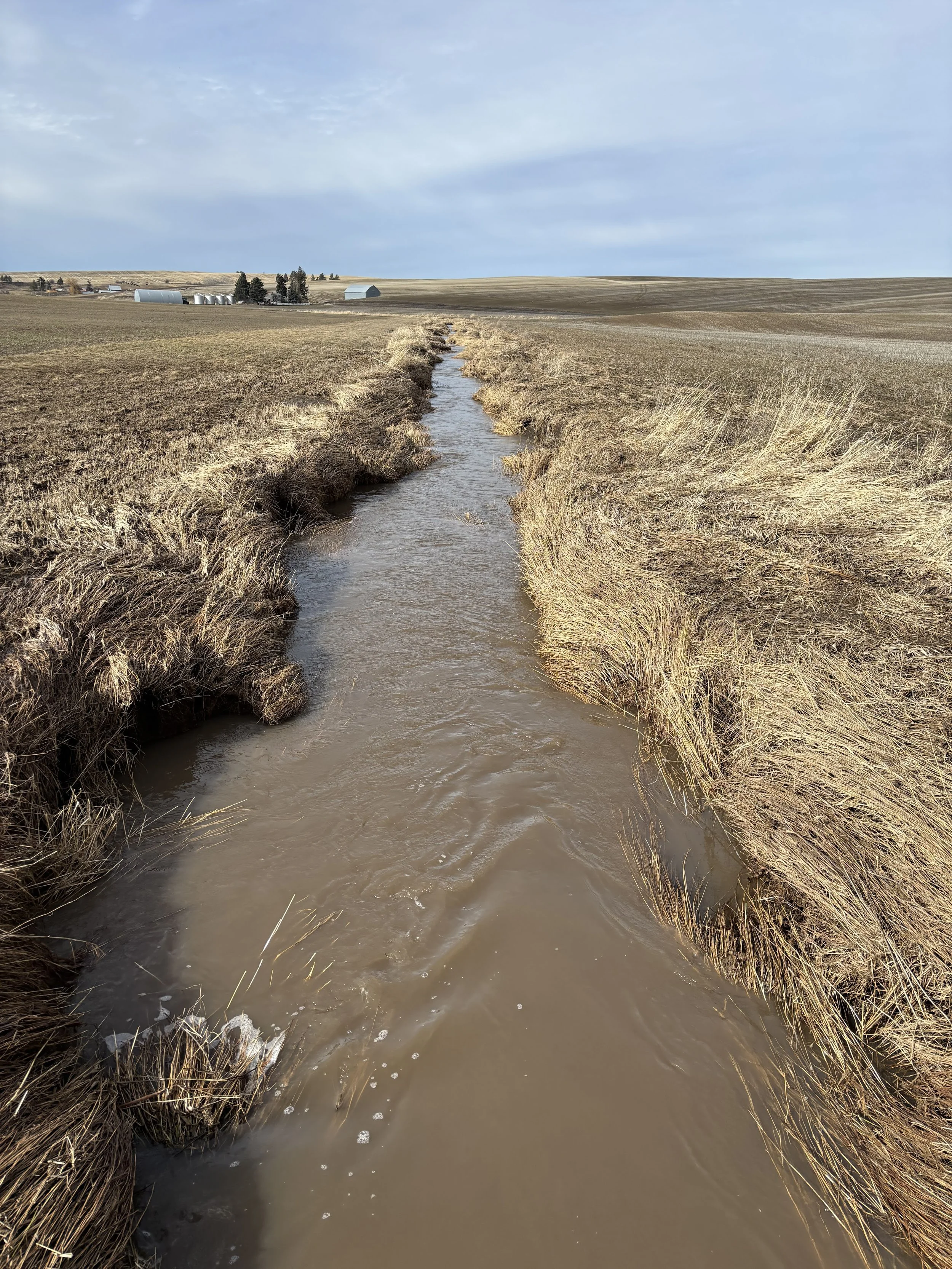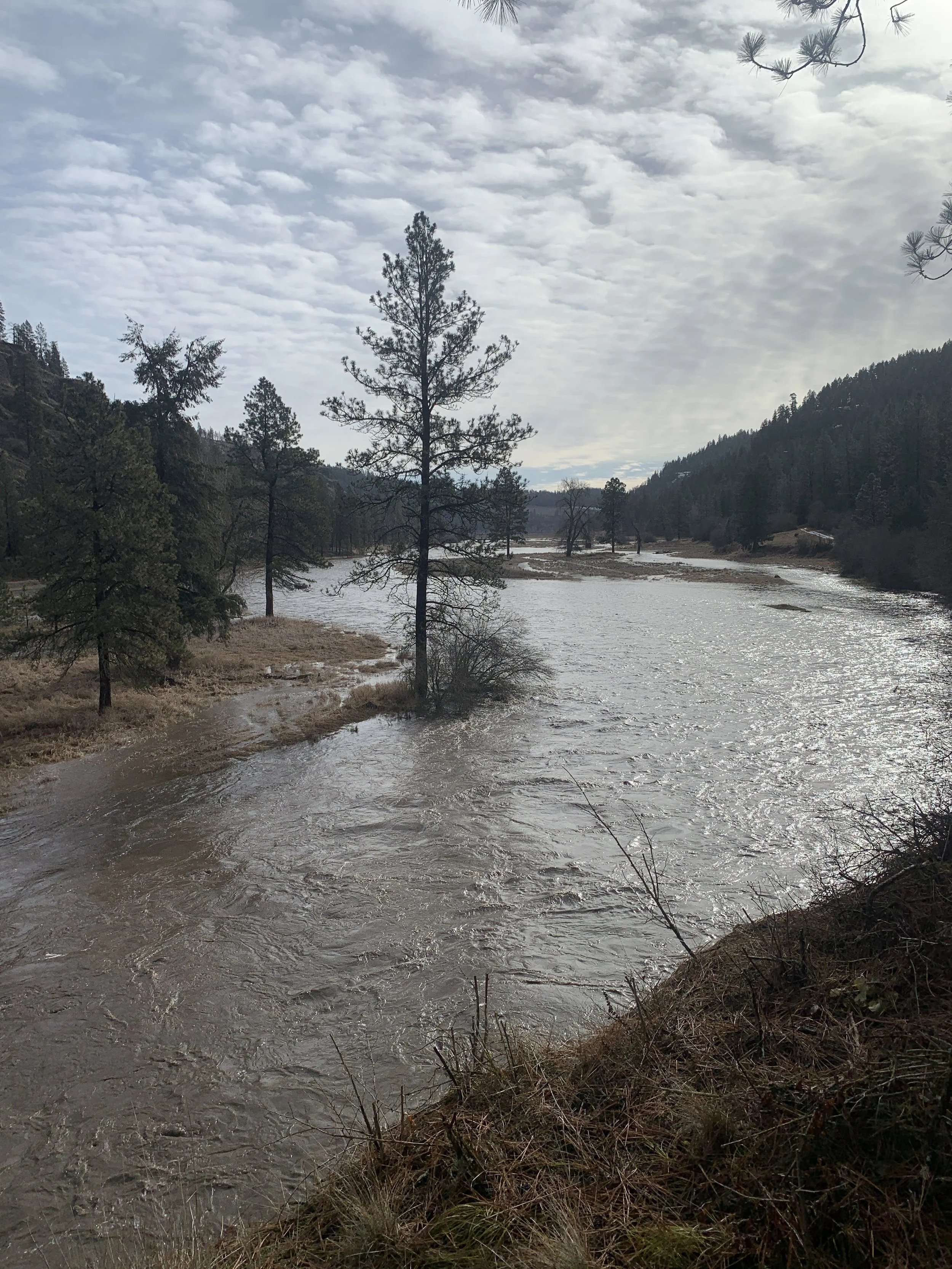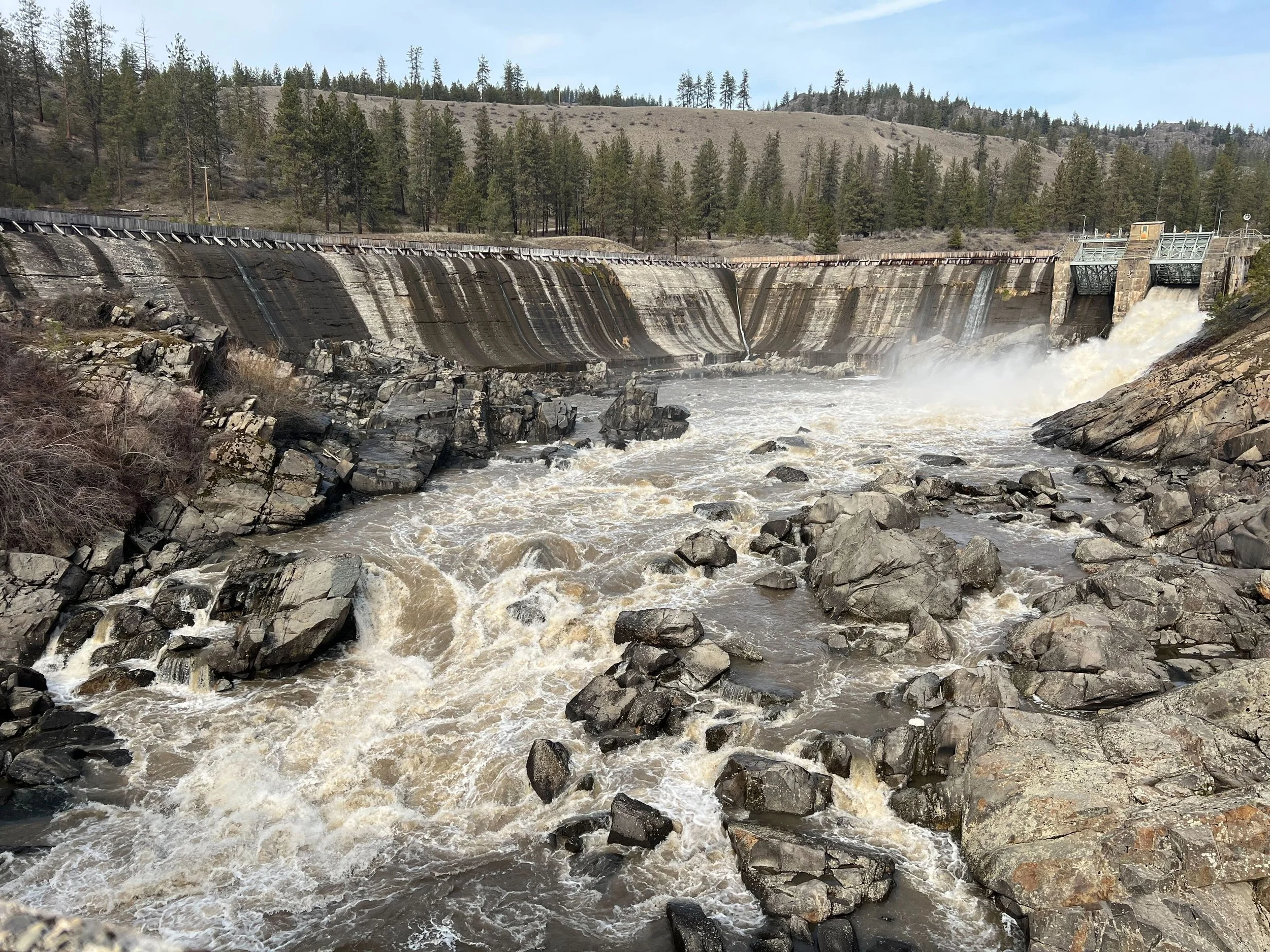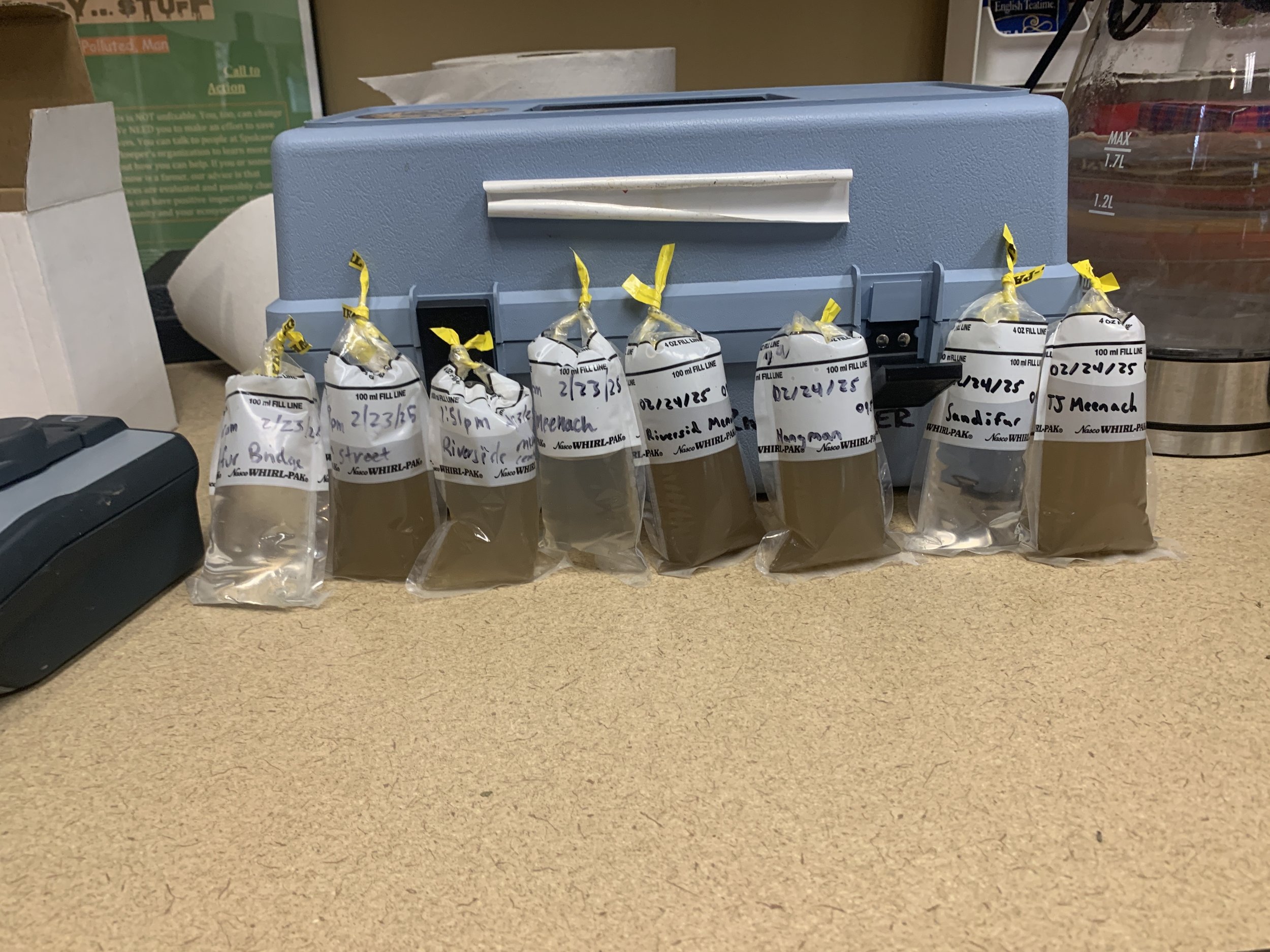February's rain-on-snow event delivered a surge of runoff to the Spokane River, pushing sediment flows to their highest levels of the decade. Minor flooding in the Hangman (Latah) Creek basin sent an overwhelming load of sediment pollution downstream, far exceeding the legal standard set under the Clean Water Act. As floodwaters carried sediment, pollutants, and debris downstream, our staff and community scientists were on the ground, documenting how the river responded to this event.
Immediate Impacts: Turbidity Spikes and Rapid Transport
The event peaked on February 24th, sending a surge of water, sediment, and debris downstream. Our water samples, collected by dedicated community scientists, showed a sharp increase in turbidity, with sediment concentrations significantly higher than baseline conditions and well beyond regulatory limits. The influx of runoff introduced a visible plume, heavily laden with fine particles and contaminants washed from urban surfaces, roadways, and eroded banks. By the same day, the sediment and debris had already reached Nine Mile Dam, over 12 miles downstream of the confluence.
While Spokane saw the floodwaters crest early in the week, the effects on water quality extend far beyond that initial surge. Observations from downstream revealed that the sediment plume took until Saturday March 1st to reach Little Falls Dam, the final dam on the river. It made its way through the Long Lake Reservoir over the course of the week, with turbidity remaining elevated for miles beyond Spokane, dramatically affecting aquatic habitat and winter recreation on the river during what are 2025’s warmest days yet.
Legal Limits for Turbidity Under the Clean Water Act
The Clean Water Act establishes regulatory limits for pollutants in U.S. waterways, including turbidity levels in the Spokane River. The legal limit for turbidity is set at 5 NTUs (Nephelometric Turbidity Units), which measures the cloudiness or haziness of water caused by suspended particles. NTU quantifies how much light is scattered by particles in water, with higher values indicating murkier water. Exceeding this limit can have significant consequences for the health of aquatic ecosystems. Excessive turbidity can harm fish by reducing visibility, clogging gills, and disrupting feeding, all of which threaten aquatic life. By setting this water quality standard, the Clean Water Act helps ensure that the Spokane River remains clear enough to support a healthy ecosystem and meet environmental protection goals.
What Comes Next?
Flood events like this one serve as a reminder of how land use, stormwater management, and climate-driven weather patterns shape our river’s health. As Spokane Riverkeeper continues monitoring and advocating for stronger protections under the Clean Water Act, our community scientists play a crucial role in gathering data and providing insights on the impacts of events like this. We encourage community members to stay informed and engaged in efforts to improve watershed resilience. Stay tuned for further analysis as we compile long-term data on the impacts of this flood event. In the meantime, if you have observations from the river, we’d love to hear from you!
To see more of the important work our volunteers and community scientists are doing, check out the photo album below with photos from our dedicated volunteers and community members.
















